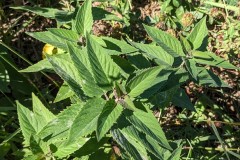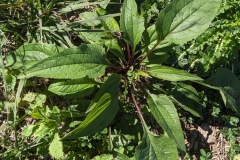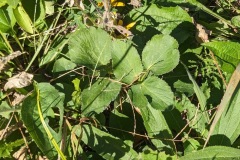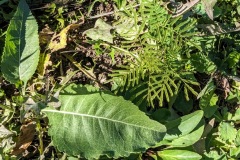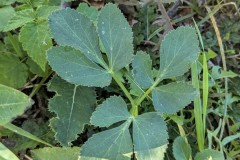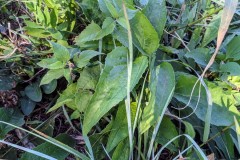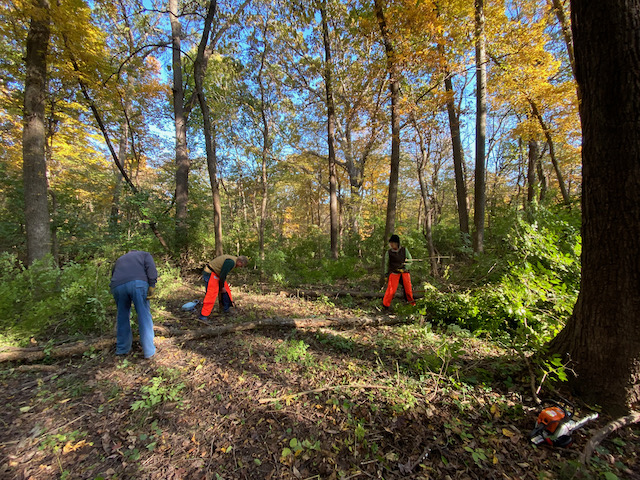Wayside Prairie
If you’ve recently passed by the northwest corner of Routes 97 & 123, directly across from Historic Wayside Park, you may have noticed some major changes. Over the past couple of years, invasive species, dead green ash, and other trees have been cleared as part of the first phase of an exciting project—the creation of a small shortgrass prairie.
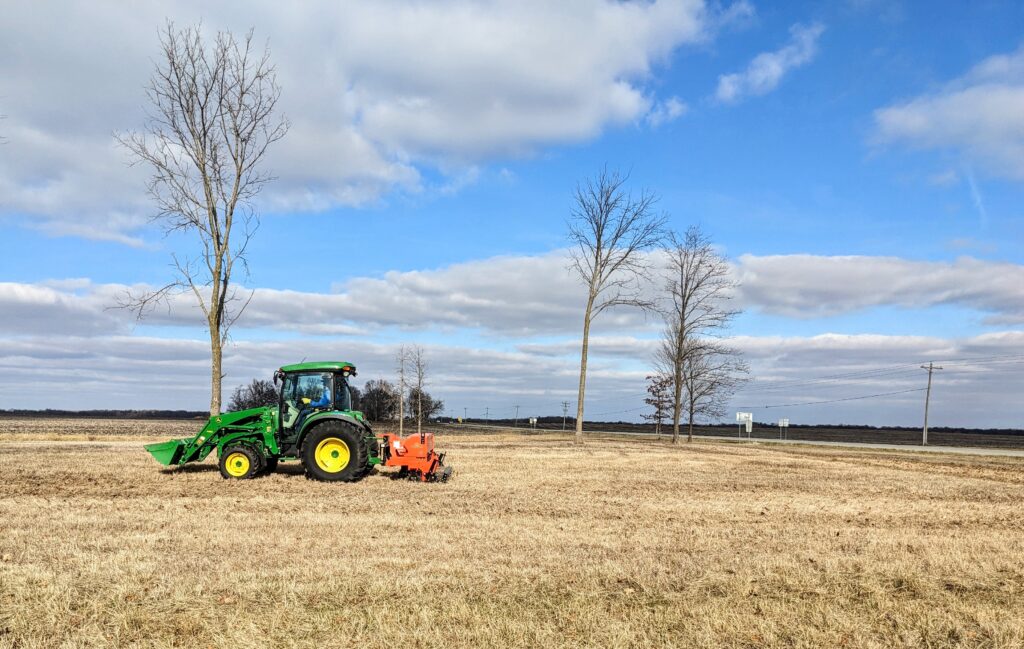
This site, an Illinois Department of Transportation (IDOT) right-of-way, is located within the 66-mile-wide Route 66 Monarch Flyway, a critical migratory corridor for monarch butterflies. A few years ago, Menard County Trails and Greenways (MCTG) approached IDOT with the idea of converting this area into pollinator habitat. Given IDOT’s commitment to enhancing pollinator environments statewide, they quickly embraced the proposal. IDOT promptly began removing the overgrowth of trees, invasives, and weeds to prepare for the prairie transformation.
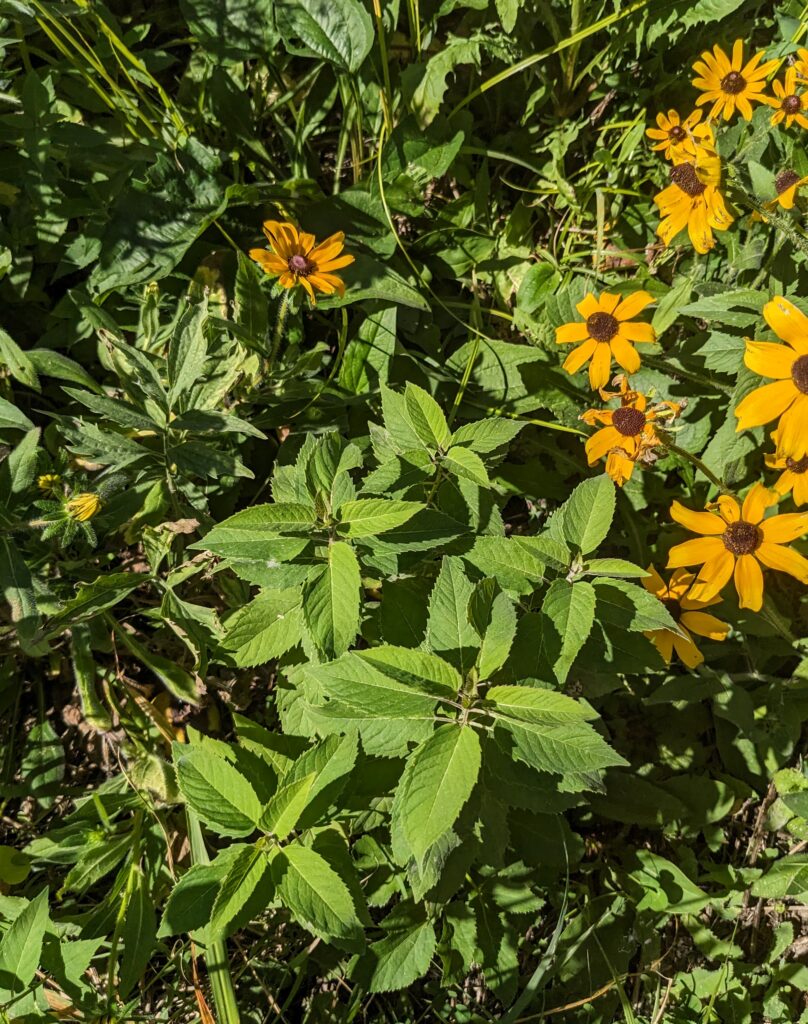
Last fall, MCTG sourced prairie seed from Mason State Tree Nursery, with generous contributions of additional seed and rice hulls from Pheasants Forever and IDOT. The area was prepared by IDOT, spraying to remove the existing non-native vegetation, and then seed was drilled mid-winter to allow for stratification. The seed mix included over 32 species of native Illinois wildflowers and grasses, some of which are already thriving. Early bloomers like black-eyed Susans are bringing a burst of color to the site, and as time goes on, many more species will emerge, creating a vibrant, diverse shortgrass prairie right here in Menard County.
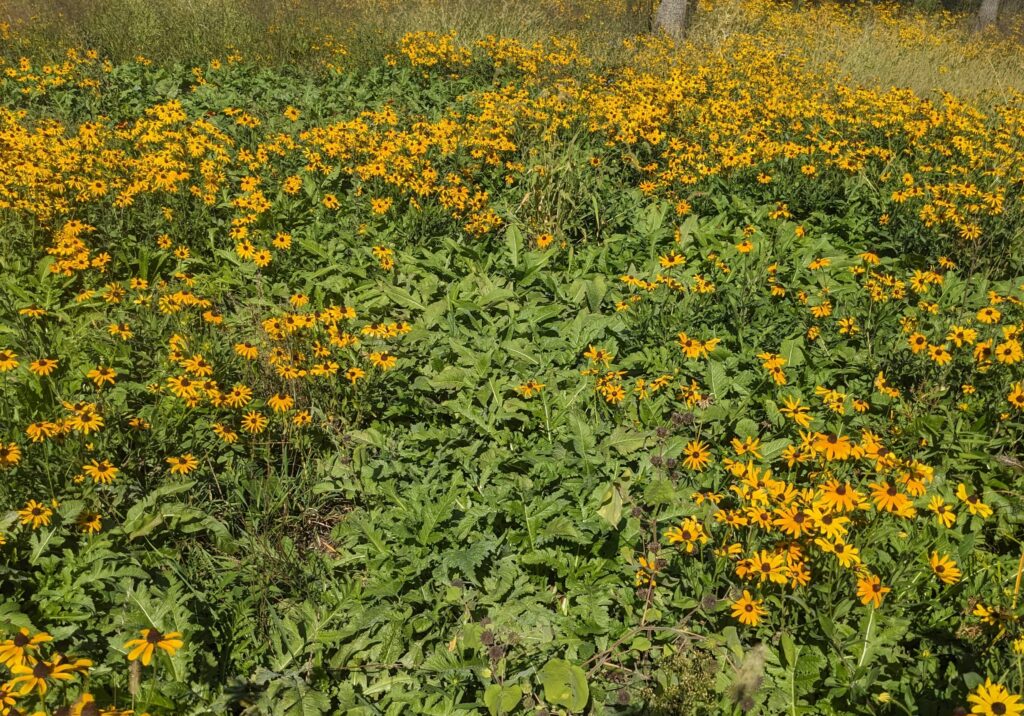
The first year of prairie establishment requires careful monitoring and maintenance. The site has been mowed three times this growing season to prevent weeds from going to seed. Fortunately, this mowing doesn’t impact the slow-growing prairie plants, which focus on developing deep root systems in their first year. Although the area was sprayed to eliminate existing vegetation before seeding, weed seeds lingering in the soil continue to sprout. Spot-spraying and manual removal of invasives like teasel, wild parsnip, and thistles will be necessary until the prairie plants become more established and the weed seeds have been eradicated from the seed bank.
Prairie restoration is a lesson in patience. It can be disheartening to see weeds pop up, but there’s also a lot to be excited about in this early stage. Seedlings of swamp milkweed, bundleflower, purple coneflower, beardtongue, golden Alexander, wild quinine, little bluestem, asters, beebalm, and many other native species have already been spotted throughout the site!
If you’d like to support this project, consider collecting seed to donate to increase the diversity of the prairie (contact us for details on desired species) or contribute towards the purchase of additional seed by donating to our Historic Wayside Park & Prairie Fund . Keep an eye out for future volunteer workdays, where we’ll engage in activities like overseeding and invasive species management to help the prairie thrive.
